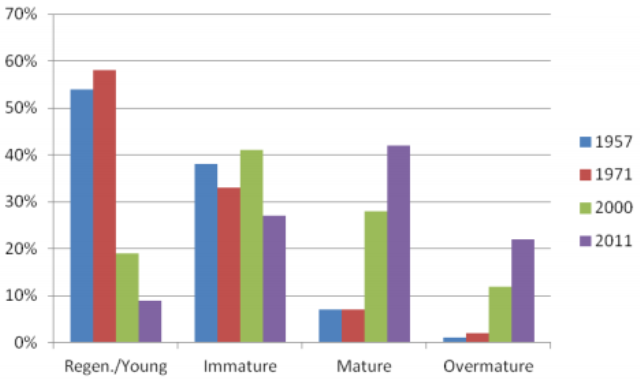Alberta was warned four years ago that the changing composition of the province’s boreal forest increased the risk of “catastrophic” fires, according to a 2012 report.

The Flat Top Complex report, named after the three fires which devastated Slave Lake in 2011, found that Alberta’s forests were aging due to reduced wildfire activity that challenged ecosystems and increased the risk “of large and potentially catastrophic wildfires.”
READ MORE: Fire grows to 85,000 hectares, no timeline on resident return
“Before major wildfire suppression programs, boreal forests historically burned on an average cycle ranging from 50 to 200 years as a result of lightning and human-caused wildfires,” a panel of four experts wrote in their report released in 2012.
“Wildfire suppression has significantly reduced the area burned in Alberta’s boreal forest. However, due to reduced wildfire activity, forests of Alberta are aging.”
The report found from 1971 to 2011 forests in the province shifted from what were considered to be predominantly young and immature forests to mostly mature and “overmature.”
Forest inventory from 1957-2011

Tom Burton, the director of Alberta Association of Municipal Districts and Counties, was one of the four expert panel members who wrote the 2012 report that made 21 recommendations aimed at preventing, mitigating and responding to future wildfires.
Burton, a volunteer firefighter for 22 years in the small town of DeBolt, Alta., says although forests have become drier in the province, past approaches to fighting wildfires have led to more severe fires.
READ MORE: What lessons were learned from the tragic 2011 Slave Lake blaze?
He said while fires approaching communities need to be stopped, fires in remote locations should be allowed to burn.
Among the recommendations in the report were lengthening the fire season (Alberta moved the start of the fire season from April 1 to March 1 this year), improving communication, and increasing fire prevention measures.
READ MORE: Evacuee describes ‘eerie calm’ amid chaos
The report also called for more staff year round, including fire attack crews, and better coordination of resources.
“Advance start times for resources, including crews, equipment and aircraft contracts, to be fully ready for potential early fire seasons,” the report said.
Burton said both the previous and current Alberta governments have accepted the recommendations in the report, and some have been implemented.
“The new government is still working with the recommendations that were put in place,” he said, adding that fire crews are now in place earlier than previous years.
On Thursday, the wildfire raging in and around Fort McMurray had grown from 10,000 to 85,000 hectares. More than 80,000 people were forced to evacuate from the city and officials say there is still no timetable for when they can return home.



















Comments